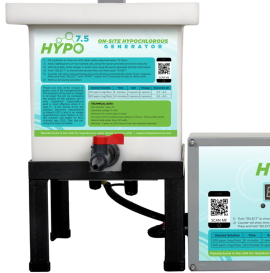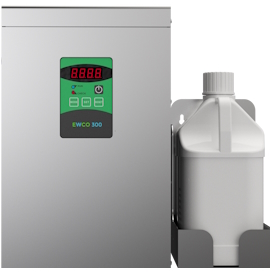Summary of United States Regulation - Hypochlorous Acid
FDA Food Contact Notification 1811 - Hypochlorous Acid at up to 60 ppm for Produce, Fish & Seafood, Meat and Poultry SanitationHypochlorous acid may may be used in processing facilities at up to 60 ppm for use in process water or ice which comes into contact with food as a spray, wash, rinse, dip, chiller water, and scalding water for whole or cut meat and poultry, including carcasses, parts, trim, and organs; in process water, ice, or brine used for washing, rinsing, or cooling of processed and pre-formed meat and poultry products as defined in 21 CFR 170.3(n)(29) and 21 CFR 170.3(n)(34), respectively; in process water or ice for washing, rinsing or cooling fruits, vegetables, whole or cut fish and seafood; and in process water for washing or rinsing shell eggs. Visit Source at FDA Website
FDA Guidance for Industry: Guide to Minimize Microbial Food Safety Hazards of Fresh-cut Fruits and VegetablesThe antimicrobial activity of a chlorine-based disinfectant depends on the amount of hypochlorous acid (also called "free chlorine") present in the water. The amount of hypochlorous acid in the water depends upon the pH of the water, the amount of organic material in the water, and, to some extent, the temperature of the water. If the amount of hypochlorous acid is not maintained when the amount of organic material increases, the antimicrobial agent may lose effectiveness in maintaining water quality. If a fresh-cut processor uses a chlorine containing compound as a disinfectant, we recommend that the processor monitor the processing water for free chlorine or hypochlorous acid concentrations. Visit Source at FDA Website
EPA: Food-Contact Surface Sanitizing Solutions - Allowance of Hypochlorous Acid at up to 200 ppmThe following chemical substances when used as ingredients in an antimicrobial pesticide formulation may be applied to food-contact surfaces in public eating places, dairy-processing equipment, and food-processing equipment and utensils. When ready for use, the end-use concentration of all hypochlorous acid chemicals in the solution is not to exceed 200 ppm determined as total available chlorine. Visit Source at EPA Website
FDA
USDA
- Memorandum updates the status of electrolyzed water (hypochlorous acid) under the U.S. Department of Agriculture (USDA) organic regulations at 7 CFR Part 205
- USDA FSIS Directive: Safe and Suitable Ingredients used in the Production of Meat, Poultry, and Egg Products
- USDA National Organic Program - Hypochlorous Acid Updates
Food Contact Notification 1811

FCN 1811 is a Food Contact Notification (FCN) from the FDA for using electrolytically generated hypochlorous acid as an antimicrobial agent in an aqueous solution in the production and preparation of whole or cut meat and poultry; processed and preformed meat and poultry; fish and seafood; fruits and vegetables; and shell eggs.
To read more about food contact notification 1811, visit the FDA website in the link below.
See at FDA WebsiteUSDA - National Organic Program

On June 9, 2014, the National Organic Program (NOP) published a policy memorandum (PM 14-3) on the status of electrolyzed water under the USDA organic regulations at 7 CFR Part 205. Following the release of PM 14-3, stakeholders provided additional technical and regulatory information on electrolyzed water to the NOP. Chlorine materials are allowed to be used in organic production and handling. The National Organic Program (NOP) Handbook includes guidance (NOP 5026) The Use of Chlorine Materials in Organic Production and Handling. This guidance clarifies the allowable uses of chlorine products under the USDA organic regulations. Chlorine materials are included on the National List of Allowed and Prohibited Substances (National List). In water, chlorine materials such as calcium and sodium hypochlorite form an equilibrium of related chlorine species, including hypochlorous acid (HOCl) and hypochlorite (ClO-). Similar chlorine species are formed in the generation of electrolyzed water. Accordingly, the NOP considers hypochlorous acid generated by electrolyzed water to be an allowable type of chlorine material.
See USDA MemorandumBest Hypochlorous Acid (HOCL) Generators
 Portable Hypochlorous Acid (HOCL) Machine
Portable Hypochlorous Acid (HOCL) Machine
Make high quality hypochlorous acid in the home or office.
$159.99 + Free Shipping
 HOCL Machine + Electrostatic Sprayer
HOCL Machine + Electrostatic Sprayer
Make hypochlorous acid and spray with an electrostatic cold fogger.
$309.98 + Free Shipping


